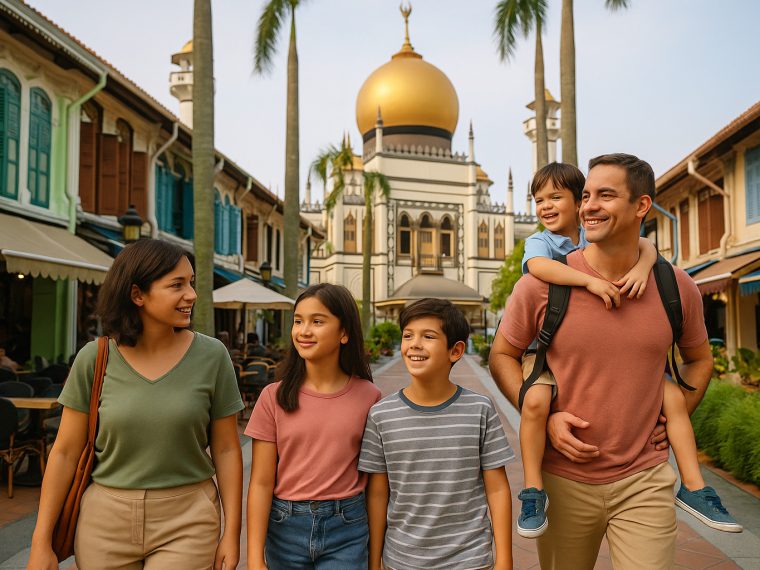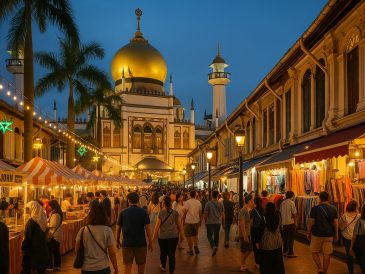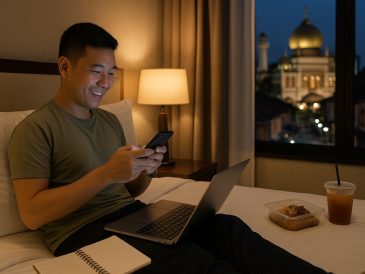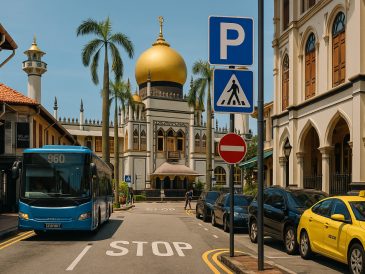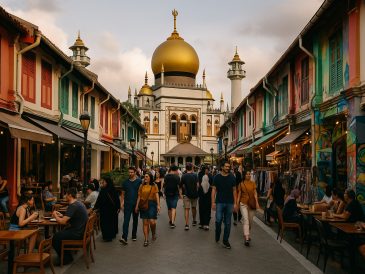Visiting Kampong Gelam with children requires smart choices and a practical approach. Between the cultural landmarks, street art, and family-friendly dining spots, there’s plenty to keep young ones engaged—if you plan with care. This guide shares specific, experience-backed tips for a smoother visit with kids of all ages.
1. Choose Walkable Routes with Shade
Singapore’s heat can wear kids down fast. Stick to shaded walkways between major spots like Sultan Mosque, the Malay Heritage Centre, and Gelam Gallery. Use Bussorah Street and Baghdad Street as your main axis—they’re mostly pedestrian-friendly, stroller-accessible, and full of visual distractions for children.
2. Use the Right Entry Points
Arrive via Bugis MRT (Exit B) or Nicoll Highway MRT (Exit A). These offer safer crossings and direct access to Kampong Gelam’s core without the heavy vehicle traffic that surrounds Beach Road and Ophir Road.
3. Build Short Itineraries
Children rarely do well with back-to-back schedules. Stick to two main attractions per half-day. Combine the Sultan Mosque visit with time at Haji Lane, or pair the Malay Heritage Centre with a hands-on workshop nearby. Mix high-engagement locations with rest stops.
4. Time Your Visit Around Mornings or Late Afternoons
Midday sun is harsh and saps energy. Start early—around 9 AM—for open-air murals and early café stops. Or visit after 4 PM when the light softens and street performances often begin. Avoid 12–3 PM unless you plan to be indoors.
5. Make Food Stops Kid-Friendly
Don’t rely on spontaneous finds. Here are tested family go-tos:
- Hjh Maimunah – spacious seating, rich flavors, and quick service
- Penny University – casual, stroller-accessible café with light bites
- Kampong Glam Café – wide range of local food and drinks
- Zam Zam – older kids will love watching the murtabak being made
Bring your own cutlery for toddlers. High chairs are limited in many local spots.
6. Schedule Free Play or Breaks
Children need space to move without structure. Open courtyards like those around Sultan Mosque, and grassy patches near the Malay Heritage Centre, give them room to unwind. Avoid crowd-heavy events unless your child is used to sensory stimulation.
7. Engage With Street Art as a Game
Turn murals into an active hunt. Use printed photos or quick sketches to let children find each mural in Gelam Gallery. This turns walking into play and helps focus their energy. Let them take photos with your phone to keep them involved.
8. Respect Cultural Etiquette—Make It a Family Rule
Teach kids basic mosque etiquette beforehand: no running, no flash photography, and covering shoulders and knees. Several mosques offer scarves or sarongs at the entrance. Parents should model the expected behavior.
9. Hydration and Restroom Stops
Bring your own water bottles and refill at cafes. Restrooms can be found at the Malay Heritage Centre, major eateries, and some boutique hotels if asked politely. Avoid relying on street-level public toilets—they may lack changing areas.
10. Use Lightweight Transport Gear
Bulky strollers are hard to manage on uneven pavements. Use lightweight, foldable strollers or toddler carriers. Babywearing is ideal for Haji Lane and Arab Street due to crowding and narrow paths.
11. Look Out for Scheduled Kid-Friendly Events
Check the events calendar beforehand. Kampong Gelam frequently hosts family-friendly workshops, storytelling, and craft booths during weekends and major festivals. Participation often requires early registration, so book ahead where possible.
12. Prepare for Heat Fatigue
Pack wet wipes, a mini fan, and snacks. Singapore’s climate takes its toll. Meltdowns are less likely when kids are fed, cooled, and given quiet breaks. Choose shaded benches or indoor spaces like textile shops to recharge.
13. Stay Flexible
Avoid rigid timelines. Allow for unexpected pauses—a street busker, a mural they want to mimic, or simply a longer lunch. Flexibility often turns a visit from exhausting to enjoyable.
A visit to Kampong Gelam with children can be rich in color, taste, and learning. Small adjustments—timing, route, and rhythm—make a big difference.
